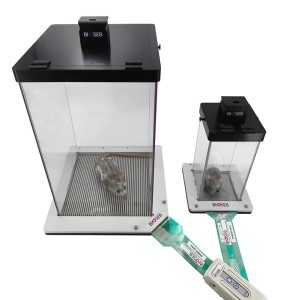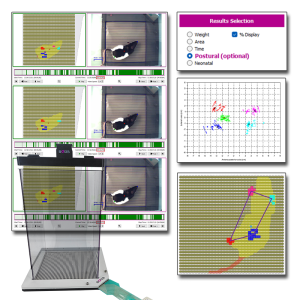Authors
Louis Dore´-Savard, Nicolas Beaudet Luc Tremblay, Yongjun Xiao, Martin Lepage, Philippe Sarret
Lab
Sherbrooke University, Quebec, Canada
Journal
Clinical & Experimental Metastasis
Abstract
Bone metastases represent a frequent complication of advanced breast cancer. As tumor growth-induced bone remodeling progresses, episodes of severe pain and fractures of weight-bearing limbs increase. All of these skeletal-related events influence the patient’s quality of life and survival. In the present study, we sought to determine whether some of these pain-related behaviors could be directly correlated to tumor progression and bone remodeling. For this purpose, we used a rat model of bone cancer pain based on the implantation of mammary carcinoma cells in the medullary cavity of the femur. The bone content and tumor growth were monitored over time by magnetic resonance imaging (MRI) and micro X-ray computed tomography (?CT). The same animals were evaluated for changes in their reflexive withdrawal responses to mechanical stimuli (allodynia) and weight-bearing deficits. As assessed by MRI, we found a negative correlation between tumor volume and allodynia or postural deficits throughout the experiment. Using ?CT, we found that the bone volume/total volume (BV/TV) ratios for trabecular and cortical bone correlated with both mechanical hypersensitivity and weight-bearing impairment. However, whereas trabecular BV/TV stabilized between days 7 and 10 post-tumor detection, the cortical bone loss reached its maximum at that time. Our imaging approach also allowed us to consistently detect the tumor before the onset of pain, paving the way for the preemptive identification of at-risk patients. Altogether, these results improve our understanding of the events leading to tumor-induced bone pain and could eventually help in the design of novel strategies for the management of bone diseases.
BIOSEB Instruments Used
Dynamic Weight Bearing 2.0 (BIO-DWB-DUAL)
Source :
http://link.springer.com/article/10.1007%2Fs10585-012-9530-0?LI=true

 Pain - Thermal Allodynia / Hyperalgesia
Pain - Thermal Allodynia / Hyperalgesia Pain - Spontaneous Pain - Postural Deficit
Pain - Spontaneous Pain - Postural Deficit Pain - Mechanical Allodynia / Hyperalgesia
Pain - Mechanical Allodynia / Hyperalgesia Learning/Memory - Attention - Addiction
Learning/Memory - Attention - Addiction Physiology & Respiratory Research
Physiology & Respiratory Research











![Dynamic Weight Bearing 2.0 – Postural Module [Add-on]](https://bioseb.com/733-home_default/dynamic-weight-bearing-20-add-on-postural-module.jpg)
























 Pain
Pain Central Nervous System (CNS)
Central Nervous System (CNS) Neurodegeneration
Neurodegeneration Sensory system
Sensory system Motor control
Motor control Mood Disorders
Mood Disorders Other disorders
Other disorders Muscular system
Muscular system Joints
Joints Metabolism
Metabolism Cross-disciplinary subjects
Cross-disciplinary subjects CONFERENCES & MEETINGS
CONFERENCES & MEETINGS 
